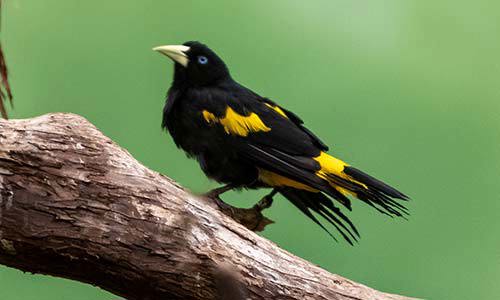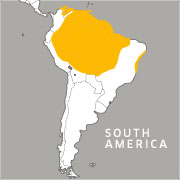Appearance:
Yellow-rumped caciques are named for the bright patch of yellow feathers over their rump, which is brighter in males than females. Most of their bodies are covered in black feathers, with additional yellow patches on the wings. Males are larger than females.
Size:
Males grow up to 29 centimeters long, while females are up to 25 centimeters long.
Diet:
Adults mostly eat insects, and among their favorites are grasshoppers, crickets, katydids and orb-weaver spiders. They supplement their insectivorous diet with fruits, nuts, and seeds.
Mating and Reproduction:
Male yellow-rumped caciques mate with many females during the short 40-day egg-laying period, during which they guard a consort of up to 27 females from other males. Each female builds an elaborate nest for her eggs.
Behavior:
They are highly social and are known to flock not only with other yellow-rumped caciques, but also with birds of other species that have similar diets.
Habitat/Range:
They are found in lowland evergreen forests in South and Central America, including Brazil, Bolivia, Peru, Panama and Trinidad.




